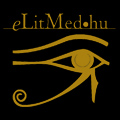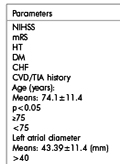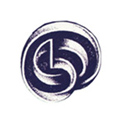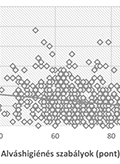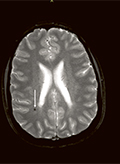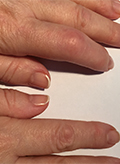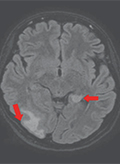The eLitMed.hu medical portal uses computer cookies for convenient operation. Detailed information can be found in the Cookie-policy.
Clinical Neuroscience - 2019;72(07-08)
Content
[In Memoriam Mátyás Bobest ]
[Mátyás Bobest died in May, 2019, at the age of 79, following a disease tolerated with patience. He was the 1st nominated Chef of the independent Neurosurgical Department at the Markusovszky University Teaching Hospital, Szombathely in 1980, and under his leadership it worked for 23 years. He succeed to create a Neurosurgical Centre of West Hungary with his diligent and ambitious work. Beside his everyday surgical duties he paid attention to the continuing medical education and made research on the intervertebral disc degeneration. ]
Attitude of spine surgeons towards the application of 3D technologies - a survey of AOSpine members
Background - 3D technologies (3D virtual and physical model, 3D printing, computer aided engineering, finite element analysis based simulations) play an important role in personalized spine surgery. Objective - In collaboration with AOSpine a global, online survey-based study was performed in order to determine the acceptance rate and the factors which stand against the wider spread of 3D technologies. Methods - A survey containing 21 questions was developed and divided into five pages, every page corresponding to one chapter. Our analysis is based on the responses of 282 spine surgeons from 57 countries. To interpret our results in a global context, we used the Human Development Index of the respondent's countries in comparisons. Results - Significant difference between the AOSpine regions (p ≤ 0.05) was found, with the highest acceptance in Asia-Pacific region. There was no significant difference in acceptance score according to the field of spine surgery, or the surgical experience in years (p=0.77, and p=0.19). In the case of public practice, we found significantly higher acceptance compared to private and mixed (public and private) surgical practice (p ≤ 0.05). The acceptance of the technology varied based on the respondent’s resident country’s Human Development Index and was significantly different between „Medium” vs “Very high” (p = 0.0005) and „High” vs „Very high” (p=0.019) category. Significant positive correlation was found between the acceptance score and the HDI score (Spearman test, ρ = 0.37, p = 0.007). The main limitation factor was identified as the lack of information. Conclusion - There is high interest among spine surgeons towards the incorporation of 3D technologies into the clinical practice. Education, the healthcare system, and the economic environment plays a major role in acceptance. Our results provide the basis of a strategy to promote the application of 3D technologies.
Restless leg syndrome frequency in health workers
Introduction - Restless Leg Syndrome (RLS) is a disease, primarily composed of sensational symptoms, caused by the urge to move lower extremities especially at night, and characterized by undesired feelings of the legs. Decreasing of the dopaminergic effect at night is thought to be responsible from these symptoms. RLS patients suffer from low quality of sleep affecting their daily life activities even causing socio-economic loss. Although RLS is a common and treatable disease, it can not be diagnosed easily due to the variability of symptoms. Aim - The purpose of this study is to determine the frequency of RLS among health workers and to define the disease causing factors. Method - A questionnaire was applied to 174 randomly selected health workers at Baskent University Medical Faculty (KA17/285). The demographic information, history of illnesses or usage of drugs, socioeconomic status, working hours and daytime sleepiness were questioned. Included in the questionnaire were diagnostic criteria for RLS, frequency assessment scale, and survey of sleep quality. We used “the diagnostic criteria of international RLS working group” for the diagnosis, and “Pittsburgh sleep quality index survey” to determine the quality of sleep. Reliability and validity studies were performed on both tests. Results - A significant relationship between socio-economic status and RLS was found (p<0.05) as an increase of RLS frequency in parallel with decreased socio-economic status. RLS was found to be common among health workers. We suggest that health workers should be checked regularly, and they should be informed about the disease in order to raise an awareness and hence increase their quality of life.
Effects of CHADS2 score, echocardiographic and haematologic parameters on stroke severity and prognosis in patients with stroke due to nonvalvular atrial fibrillation
Introduction - The aim of this study is to evaluate utility of CHADS2 score to estimate stroke severity and prognosis in patients with ischemic stroke due to non-valvular atrial fibrillation (AF) in addition to evaluate effects of hematologic and echocardiographic findings on stroke severity and prognosis. Methods - This prospective study included 156 ischemic stroke cases due to non-valvular AF in neurology ward of Trakya University Medical School between March 2013-March 2015. National Institute of Health Stroke (NIHS) score was used to evaluate severity of stroke at admission. Carotid and vertebral Doppler ultrasonography findings, brain computed tomography (CT) and magnetic resonance imaging (MRI) of the cases were evaluated. Left atrial diameter and ejection fraction (EF) values were measured. CHADS2 score was calculated. Modified Rankin Scale was used to rate the degree of dependence. Effects of age and sex of the patients, presence of diabetes mellitus (DM), Congestive Heart Failure (CHF), Cerebrovascular Disease (CVD) and C-reactive protein (CRP) levels on CHADS2, NIHS, and mRS were evaluated. Results - In patients with age ≥75, mean NIHS score was 3.3 points and mean mRS score was 1.02 points higher, than in patient below 75 years of age. Compared with the mild risk group, cases in the high risk group had older age, higher serum D-dimer, fibrinogen and CRP levels and lower EF. A positive relation was detected between stroke severity and Hemorrhagic Transformation (HT), previous CVD history, and presence of CHF. A significant association was found between increased stroke severity and Early Neurological Deterioration (END) development. Older age, higher serum fibrinogen, D-dimer, CRP and lower EF values were associated with poor prognosis. History of CVD and presence of CHF were associated with poor prognosis. END development was found to be associated with poor prognosis. In the high-risk group, 30.3% (n = 33) had END. Among those in the high-risk group according to the CHADS2 score, END development rate was found to be significantly higher than in the moderate risk group (p <0.05). There was a strong positive correlation between CHADS2 and NIHS scores. mRS score increased with increasing CHADS2 score and there was a strong correlation between them. Effect of stroke severity on prognosis was assessed and a positive correlation was found between NIHS score and mRS value. Discussion - Our study demonstrated the importance of CHADS2 score, haemostatic activation and echocardiographic findings to assess stroke severity and prognosis. Knowing factors which affect stroke severity and prognosis in patients with ischemic stroke may be directive to decide primary prevention and stroke management.
Investigation of risk factors, topographic location and stroke mechanisms of unilateral isolated and posterior cerebral ARTERY thalamic infarcts
Aim - In this study, we aimed to examine the risk factors, topographic features and stroke mechanisms of acute ischemic unilateral infarcts of thalamus. Methods - Patient with isolated thalamic infarct and those with posterior cerebral artery (PCA) infarction who were admitted to our hospital between January 2014 and January 2017 with acute unilateral thalamic infarction (TI) were included in this study (isolated thalamic infarction/ isolated TI; thalamic and posterior cerebral artery infarction/PCA+TI). Demographic characteristics and vascular risk factors of the patients were determined. Thalamic infarct areas were recorded topographically as anterior, posteromedial, ventrolateral, posterolateral, more than one area, and variant areas. Stroke mechanism was determined according to the criteria of „Trial of Org 10172 in Acute Stroke Treatment” (TOAST). Patients with isolated TI and PCA TI were compared according to risk factors, stroke mechanism and infarct topography. Results - Forty-three patients with a mean age of 63.3 ± 14.5 years were included in the study. Twenty-eight patients (60.1%) were found to have isolated TI and the remaining 15 patients (34.9%) had PCA+TI. 32.1% of patients with isolated TI had sensory symptoms on presentation, and 60% of patients with PCA-TI had sensorimotor symptoms. The mean age, the mean score on National Institutes of Health Stroke Scale (NIHSS) and the mean frequency of atrial fibrillation were higher in PCA+TI patients than in isolated-TI patients (p: 0.04, p: 0.004, p: 0.02 respectively). 32.6% of the patients had ventrolateral, 30.2% had posteromedial involvement. Ventrolateral topography was seen in 46.7% of the PCA+TI patients, while posteromedial topography was seen in 39.3% of the isolated-TI patients. 53.6% of the isolated-TI had small vessel disease etiology, while 40% of the PCA+TI had cardioembolic etiology, and the other 40% had large artery atherosclerosis. Conclusion - Our study showed that the most ommon stroke mechanism in patients with thalamic infarction is the small vessel disease. Isolated TI and PCA+TI patients differ in terms of etiologic mechanism and infarct topography. Variant territorial involvement and multiple area involvements can be quite common in thalamic infarcts.
Relationship between Status Epilepticus Severity Score and etiology in adult NCSE patients
Purpose - Nonconvulsive status epilepticus (NCSE) is a heterogeneous, severe neurological disorder of different etiologies. In this study, the outcomes of NCSE episodes was assessed in a large series of adult patients. Our objective was to evaluate relationship between Status Epilepticus Severity Score (STESS) and etiology and the role of etiological factors on predicting the outcomes. Method - In this retrospective study, the medical records of 95 patients over 18 years of age who were diagnosed with NCSE between June 2011 and December 2015 were reviewed. Their treatment and follow-up for NCSE was performed at the Epilepsy Unit in Department of Neurology, Antalya Research and Training Hospital. Etiological factors thought to be responsible for NCSE episodes as well as the prognostic data were retrieved. The etiological factors were classified into three groups as those with a known history of epilepsy (Group 1), primary neurological disorder (Group 2), or systemic/unknown etiology (Group 3). STESS was retrospectively applied to patients. Results - There were 95 participants, 59 of whom were female. Group 1, Group 2, and Group 3 consisted of 11 (7 female), 54 (33 female), and 30 (19 female) patients, respectively. Of the 18 total deaths, 12 occurred in Group 2, and 6 in Group 3. The negative predictive value for a STESS score of ≤ 2 was 93.88% (+LR 2.05 95% CI: 1.44-2.9 and -LR 0.3 95% CI 0.10-0.84 ) in the overall study group. While the corresponding values for Group 1 (patients with epilepsy), Group 2 (patients with primary neurological disorder), and group 3 (patients with systemic or unknown etiology) were 100%, 92.59% (+LR 2.06 95%CI: 1.32-3.21 and -LR 0.28 95% CI 0.08-1.02 ) 83.33% (+LR 1.14 95%CI: 0.59-2.9 and -LR 0.80 95% CI 0.23-2.73). Conclusions - This study included the one of the largest patients series ever reported in whom STESS, a clinical scoring system proposed for use in patients with status epilepticus, has been implemented. Although STESS appeared to be quite useful for predicting a favorable outcome in NCSE patients with epilepsy and primary neurological disorders, its predictive value in patients with systemic or unknown etiology was lower. Further prospective studies including larger NCSE samples are warranted.
[Sleep habits among preschool- and schoolchildren]
[Objective - Our aim is to evaluate sleep habits, sleep quality and influencing factors among preschool- and schoolchildren. Method - Two questionnaires were recorded. Questionnaire 1 dealt with sleeping habits, breastfeeding and health behavior of preschool children and infant, and it contained the abbreviated version of the Children’s Sleep Habits Questionnaire. Questionnaire 2 dealt with health behavior and the application of sleep hygiene rules, as well as it contained the Athens Insomnia Scale. Subjects - We assessed a total of 1063 questionnaires: 516 kindergarten children participated in our online survey across the country; 547 primary and secondary school students participated in the 2nd questionnaire survey in Szolnok. Results - Parents’ observation shows that the average nighttime sleeping time of kindergarten children is 10 hours 20 minutes on weekdays and 10 hours 36 minutes on weekends. The most popular sleeping habits in kindergarten age: teal reading (65.1%) and co-sleeping (42.8%). Parents of infants used breastfeeding (50.4%) and rocking (43.2%) most frequently before sleep. Co-sleeping has a positive influence on the length of lactation. Among the preschool sleeping habits we have proved a number of positive effects of teal reading, while watching television have negative effects. The sleep quality of school-age children according to the Athens Insomnia Scale is 6.11 points (SD: 4.11), 19% of the children are insomniac. Their sleep time is 7 hours 31 minutes on weekdays and 9 hours 30 minutes on weekends. The usage of good health behavior and sleep hygiene rules positively influence sleep quality and sleep duration. Conclusions - With our results, we would like to draw the attention of children and parents to the importance of sleeping and using sleep hygiene rules.]
Cerebral cavernous malformation type 1 with retinal blood vessel tortuosity and KRIT1 gene mutation
Cerebral cavernous malformations (CCMs) represent a relatively rare and heterogeneous clinical entity with mutations identified in three genes. Both sporadic and familial forms have been reported. We present a young female patient with episodic paresthesia and headaches, but without acute neurological deficits. Her mother had a hemorrhaged cavernoma surgically removed 21 years ago. Cranial magnetic resonance imaging revealed multiple cavernous malformations in the size of a few millimeters and the ophthalmologic exam detected retinal blood vessel tortuosity in the proband. Targeted exome sequencing analysis identified a nonsense mutation in exon 16 of the KRIT1 gene, which resulted in a premature stop codon and a truncated protein underlying the abnormal development of cerebral and retinal blood vessels. This mutation with pathogenic significance has been reported before. Our case points to the importance of a thorough clinical and molecular work up despite the uncertain neurological complaints, since life style recommendations, imaging monitoring and genetic counseling may have major significance in the long term health of the patient.
[Treatment of complex regional pain syndrome with amitriptyline]
[Introduction - Complex regional pain syndrome is a distressing neuropathic pain condition without known etiology and evidence based treatment. Case presentation - Here a posttraumatic severe case of complex regional pain syndrome is presented, successfully treated by amitriptyline monotherapy. Amitriptyline is one of the most effective evidence based treatments of peripheral diabetic neuropathic pain and other neuropathic pain syndromes. Discussion - Amitriptyline seems to be effective to decrease pain, autonomic and motor symptoms in chronic regional pain syndrome. Conclusion - Controlled trials may be warranted to test the effectiveness of amitriptyline in complex regional pain syndrome.]
Isolated hypoglossal nerve palsy due to a jugular foramen schwannoma
Introduction – Although the involvement of the hypoglossal nerve together with other cranial nerves is common in several pathological conditions of the brain, particularly the brainstem, isolated hypoglossal nerve palsy is a rare condition and a diagnostic challenge. Case presentation – The presented patient arrived to the hospital with a history of slurred speech and an uncomfortable sensation on his tongue. Neurological examination showed left-sided hemiatrophy of the tongue with fasciculations and deviation towards the left side during protrusion. Based on the clinical and MRI findings, a diagnosis of hypoglossal nerve schwannoma was made. Discussion – Hypoglossal nerve palsy may arise from multiple causes such as trauma, infections, neoplasms, and endocrine, autoimmune and vascular pathologies. In our case, the isolated involvement of the hypoglossal nerve was at the skull base segment, where the damage to the hypoglossal nerve may occur mostly due to metastasis, nasopharyngeal carcinomas, nerve sheath tumors and glomus tumors. Conclusion – Because of the complexity of the region’s anatomy, the patient diagnosed with hypoglossal nerve schwannoma was referred for gamma knife radiosurgery.
A case report of Morvan syndrome
Morvan syndrome is a rare disease characterized by peripheral nerve hyperexcitability, encephalopathy, dysautonomia and significant insomnia. The patient, who was included in the present study, was followed-up at our clinics for confusion, myokymia, hyperhidrosis, epileptic seizures, tachycardia, agitation, hypokalemia, and hyponatremia. The cranial MRI of the patient demonstrated hyperintensities at the T2 and FLAIR sections of the medial temporal lobe and insular lobes. Electromyography and neurotransmission examination results were concordant with peripheral nerve hyperreactivity. Contactin-associated protein-like 2 antibodies and leucine-rich glioma inactivated protein 1 antibodies were detected as positive. The patient was diagnosed with Morvan syndrome; intravenous immunoglobulin and corticosteroid treatment was started. Almost full remission was achieved. This very rare syndrome implies challenges in diagnosis and treatment; however, remission can be achieved during the follow-up. In addition, caution is needed in the long-term follow-up of these patients regarding the development of malignancies.
1.
Clinical Neuroscience
Is there any difference in mortality rates of atrial fibrillation detected before or after ischemic stroke?2.
Clinical Neuroscience
Factors influencing the level of stigma in Parkinson’s disease in western Turkey3.
Clinical Neuroscience
Neuropathic pain and mood disorders in earthquake survivors with peripheral nerve injuries4.
Journal of Nursing Theory and Practice
[Correlations of Sarcopenia, Frailty, Falls and Social Isolation – A Literature Review in the Light of Swedish Statistics]5.
Clinical Neuroscience
[Comparison of pain intensity measurements among patients with low-back pain]1.
2.
Clinical Neuroscience Proceedings
[A Magyar Stroke Társaság XVIII. Kongresszusa és a Magyar Neuroszonológiai Társaság XV. Konferenciája. Absztraktfüzet]3.
4.
Journal of Nursing Theory and Practice
[A selection of the entries submitted to the literary contest "Honorable mission: the joys and challenges of our profession" ]5.
Journal of Nursing Theory and Practice
[End of Life and Palliative Care of Newborns in the Nursing Context]




